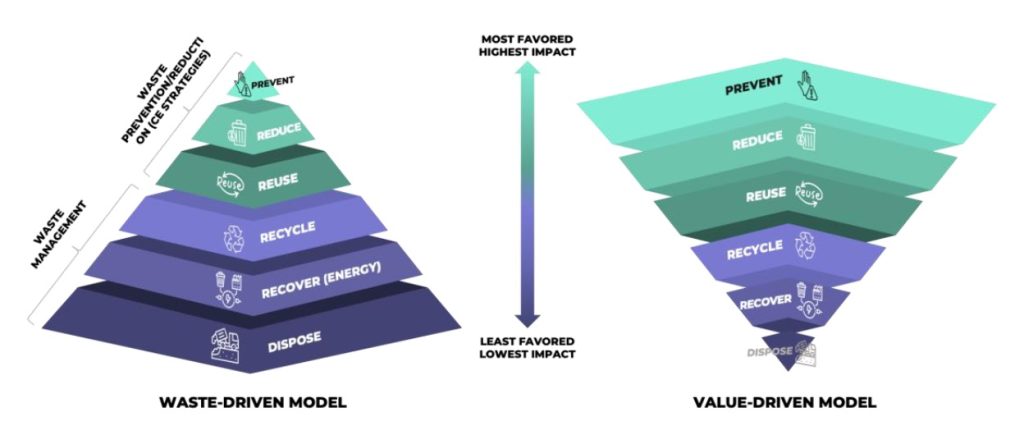Since the industrial revolution, our economies have grown following a linear ‘one-way’ pattern of use of natural resources consisting basically of “take, make, use, waste” model based on the false belief that resources are infinitely available and accessible at an affordable cost, both economically and environmentally. The truth is that the earth system failed to sustain such pattern—with the world’s consumption today outpacing the earth’s capacity—whose cost turned out to be very high in terms of scarcity of materials and the environmental drawback affecting the earth ecosystem.
Current figures speak volumes. According to the World Counts estimation, we would need about 1.7 Earths to provide resources for our consumption and absorb our wastes. Yet as per the Circularity Gap Report, our world is currently only 7.2% circular. This means that, out of 100 billion tons of resources that we consume every year, only 7.2 billion tons are cycled back into the economy, while the rest is wasted!
With our resources dwindling, and the environmental costs of a “take-make-use-waste” system surging, coupled with the negative impacts on biodiversity and climate stability, the shift from extraction-based economies to fundamentally circular ones becomes critical. But what is a circular economy?
Ellen McArthur Foundation defines Circular Economy as an economic system of closed loops, where materials never become waste and nature is regenerated. In a circular economy, products and materials are kept in circulation, retaining their value for as long as possible, before being returned to nature safely and without causing any harm.

Despite there being over 221 definitions, misconceptions about the circular economy still prevail. Here, we highlight three common myths about the circular economy to reveal what it truly means to be circular—and why understanding this distinction now matters more than ever.
Myth 1: It is just better waste management
The journey to circular economy begins with rethinking waste, but circular economy is more than efficient waste disposal. While waste management may be the first step, it’s the bottom rung of the circular economy ladder. The focus of the circular economy is to fundamentally design waste outside the system, rather than designing with waste. It reorients thinking toward maximizing resource use at every step, not simply handling waste better. In essence, the best waste is no waste!

Myth 2: It is all about recycling more
Recycling is only one component of the circular economy, and even then, it is a last resort. The real focus lies in keeping products and materials at their highest value for as long as possible, which involves rethinking product design, durability, and lifecycle.
Most materials are recycled only once or twice before actually heading to landfills. Even then, materials end up “downcycled” in many cases, such as recycled plastic used in road filler. A circular economy focuses on products that retain their initial high-value or are designed to be easily repurposed without losing quality.
In fact, 80% of a product’s environmental impact is influenced by decisions made at the design stage, before the product leaves the factory—before recycling is even an option. Circular Economy thus requires designing with longevity, repairability, and reusability in mind.

Myth 3: It is a fancy word for sustainability
The circular economy is not a different shade of green; it’s a fundamentally different system by design. The circular economy does not aim to sustain our current system. It is about designing differently from the outset, by reshaping production and consumption patterns, rather than mitigating and reducing the impact of something that has already been created. It is not about being “less bad”, but rather “more good”.
While it is indeed a broad societal transition, circular economy is just one strategy among many in our efforts to thrive in a world that is economically viable, socially just, and environmentally safe.
So, as we stand at the crossroads of economic and environmental transformation, are we prepared to break from the status quo and build an economy that not only sustains but actively restores our planet?